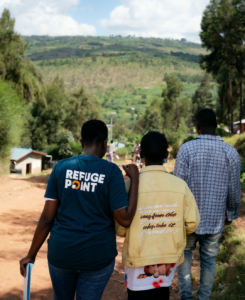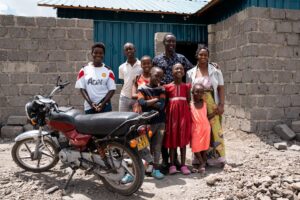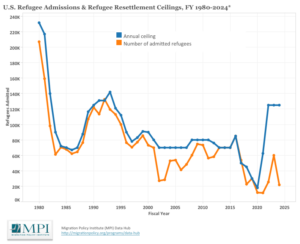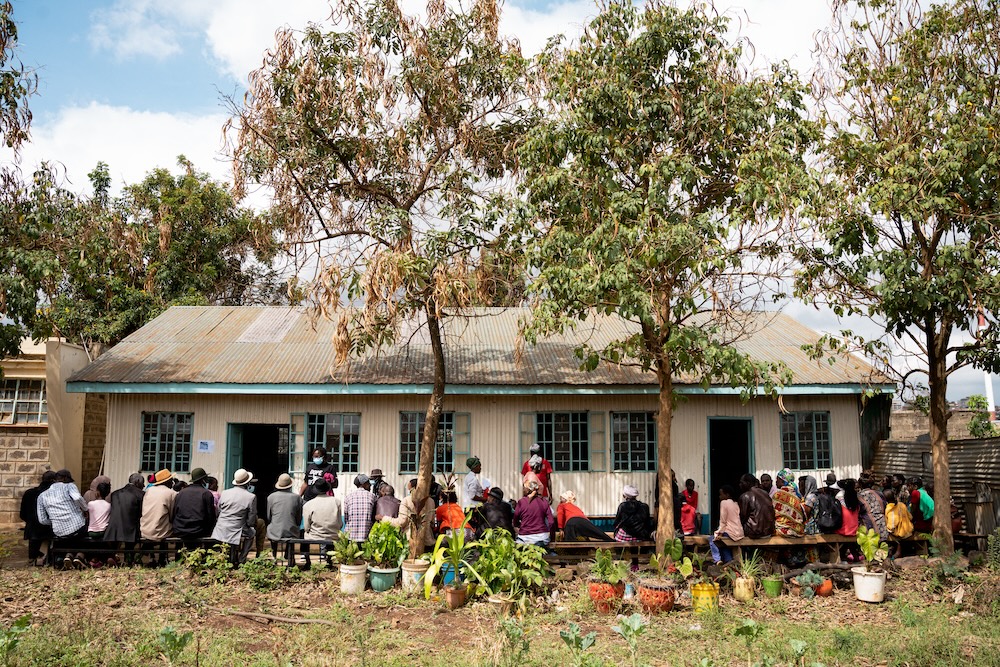There are so many different circumstances in 2024 that cause people around the world to have to flee their homes and seek safety elsewhere. In the complex landscape of immigration, terms like refugees, asylum seekers, and migrants are often used interchangeably, leading to confusion and misunderstanding. While they all share the common goal of finding a new home in a new land, refugees, asylum seekers, and migrants are all distinct, and each is potentially able to access different pathways to achieve their aspirations and goals.
Refugees
Refugees are people who have fled their home country to escape conflict, violence, or persecution and have sought safety in another country (UNHCR). The country to which the refugee has fled is commonly referred to as the host country. “Refugee” is a legally recognized status that affords individuals certain protections while they seek permanent solutions, but also comes with many restrictions. Many refugees spend 20 or more years living in their host country, where they are generally unable to legally work. For the most part, children born to refugees living in host countries are still considered refugees and are not offered the benefits of citizenship in the country where they were born.
Unfortunately, most refugees are unable to return to their home country. When they can’t, they hope to either legally integrate into the country where they reside (which is also often not possible), or find a pathway to another country (often referred to as a third country), where they can safely build a new life for themselves and their families. Many aspire to come to America.
Of the 35.3 million refugees* across the globe, a very small percentage come to the United States (see the FAQ section for data). The refugees who are approved to resettle to the U.S. undergo a rigorous vetting process including background and medical checks. Upon entry, refugees are granted legal protection and assistance, and can access pathways to permanent residency and eventually citizenship, allowing them to rebuild their lives in safety and dignity.

Read more about how RefugePoint partners with refugees to find lasting, life-changing solutions.
Asylum Seekers
Asylum seekers share similarities with refugees, as they too flee their home countries and seek safety in a foreign land. However, unlike refugees who apply for protection from a host country, asylum seekers often travel directly to their desired country and request asylum upon arrival or shortly thereafter. They present themselves to immigration authorities and undergo a screening process which determines whether they will be allowed to stay.
The screening process for asylum seekers varies by country. If granted asylum, they are often afforded similar rights and protections as refugees, which in the United States includes the opportunity to rebuild their lives and a pathway to citizenship.
While refugees and asylum seekers often face prejudice and stigmatization in the United States, they have a net-positive effect on both their local and national economy. A recent study by the U.S. Department of Health and Human Services found that refugees and asylum seekers contributed a net $124 billion to the economy between 2005 and 2019.
Migrants
Migrants encompass a broader category of individuals who move from one place to another, often in search of better economic opportunities. While some migrants may also flee conflict or persecution, they do not necessarily meet the criteria for refugee status or asylum.
In the context of United States immigration, migrants may enter through legal channels such as employment-based visas or family sponsorship, or they may enter unlawfully, facing potential deportation if discovered.
RefugePoint’s Work
At RefugePoint, we work with individuals in the refugee category who have fled their homes and are living in host countries (click here to see a map of where we work). For refugees who are stuck in their host country without an opportunity to return home or access resettlement or another pathway, we help them leverage their available resources to achieve self-reliance and become independent of humanitarian aid. For those who aren’t safely able to stay in their host countries, we help refugees access available legal pathways like resettlement, labor mobility, and family reunification to find safety in a third country.

FAQs
I’ve recently heard about “climate refugees.” Are these individuals treated the same as refugees in the eyes of the law?
No, they are not the same. It is important to note that “Climate Refugees,” an increasingly common term describing those who have been displaced due to the growing effects of climate change, are not considered refugees in the eyes of international law and are generally not able to access the same pathways or protections as refugees. It is worth noting that climate change is a trigger for conflict.
What is humanitarian parole?
Humanitarian parole is a discretionary measure used by the U.S. government to allow individuals to enter the United States who would otherwise be inadmissible. It is important to note that, unlike the refugee admissions process, parole does not offer permanent status (although in some cases, permanent status can later be acquired). Parole can be granted due to several reasons, such as medical needs, family reunification, or a sudden and significant ongoing conflict in another country (recent widely publicized country-specific humanitarian parole programs have been in place for Ukrainians, Afghans, and Cubans).
How many refugees are admitted into the U.S. each year?
The U.S. Bureau of Population, Refugees, and Migration (PRM) sets an “admissions ceiling” for the number of refugees it agrees to admit each year. Click here to view U.S. annual refugee admissions ceilings and actual refugee admissions by year from 1980-present.

*According to UNHCR, there are currently 35.4 million refugees worldwide, but the total amount of forcibly displaced people globally is currently over 114 million.
By Alison Pappavaselio, Digital Communications Officer, RefugePoint
